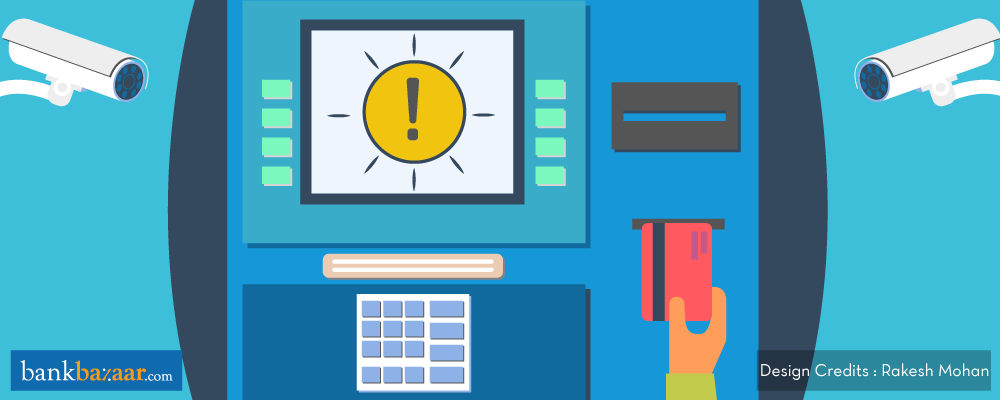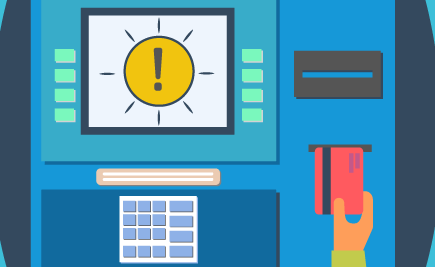
Many people are in the habit of withdrawing small amounts of money from the ATM to curb spending tendencies, but often end up with a high frequency of withdrawals. There are some others who are reluctant to use net banking or mobile banking facilities and depend on ATMs to check their account balance. However, this might prove to be a costly habit. Here’s why.
What are the ATM rules?
According to RBI guidelines, savings bank account holders in metropolitan cities are allowed only three transactions from the ATMs of other banks and five from the same bank in a month. For any ATM transaction above the stipulated limit, a transaction fee of a maximum of Rs. 22 is charged to the account holder. The charges vary from one bank to another. The transaction fee is applicable only for people living in the six metropolitan cities including Mumbai, Delhi, Bengaluru, Chennai, Hyderabad and Kolkata. People living in smaller towns and other centres enjoy five free monthly transactions from the ATM of their banks as well as other banks. This makes it 10 free transactions per month in non-metros. The charges after that limit are a maximum of Rs. 20 each for cash withdrawals and Rs. 9 for non-cash transactions. Zero-balance account holders and other no-frills accounts in non-metros are exempted from such transaction charges as of now.
Recent changes in ATM charges
After the demonetisation drive ATM charges were waived off, but it’s back to the ‘good’ old days now. Many banks have reinstated ATM charges including the State Bank of India (SBI), Axis Bank and ICICI Bank. SBI will levy Rs. 20 plus service tax if you withdraw from other bank ATMs. This will be applicable after you exhaust your 3 free transactions. If you withdraw more than five times from an SBI ATM, you will need to shell out Rs. 10 plus service tax. There are some exceptions, however. Got an account balance of Rs. 25,000? You don’t have to pay any charges for withdrawing from an SBI ATM. Are you a premium customer with an account balance of over Rs. 1 lakh? All your ATM transactions will be free of cost.
But note that there are banks that offer all ATM transactions for free. Here’s a comparison of ATM usage rules, as decided by some popular banks:
ATM Charges Of Popular Banks
| Bank | All transactions free irrespective of RBI limit | Charges for financial transaction* | Charges for non-financial transaction* |
| SBI | Yes, if you hold an account with a minimum balance of Rs. 1 lakh | Rs. 20 | Rs. 10 |
| ICICI Bank | No | Rs. 20 | Rs. 8.5 |
| Axis Bank | No | Rs. 20 | Rs. 8.5 |
| IndusInd Bank | Yes, own bank ATM transactions are free for all accounts, all ATM transactions are free for high-end accounts | Rs. 20 | Rs. 20 for balance enquiry |
| Kotak Mahindra Bank | Yes, across all ATMs for high-end accounts and when using home ATMs for other accounts | Rs. 20 | Rs. 20 |
*Exclusive of service tax
What does this mean?
It will cost you if you withdraw cash from ATMs frequently. Consider this; if you withdraw Rs. 100 from your ATM (after you exhaust the free transactions), you might have to pay 22% of that amount as a transaction fee. Also, earlier, non-financial transactions were not considered to be ATM transactions. Now, all ATM transactions including requesting a mini statement, balance enquiry and changing of your PIN are considered to be ATM transactions.
Why is the RBI allowing banks to charge such fees?
The limit to the number of free transactions is justified by the apex body, keeping in mind the high expenses involved in managing ATMs across the country. With an increasing number of robbery attempts on various ATMs, especially in isolated areas and in semi-urban and rural areas, the banks have been forced to shell out funds to install a security mechanism, apart from using CCTVs and manual security guards wherever possible.
With the Reserve Bank of India (RBI) laying down strict security guidelines not to leave any ATM unmanned or without security cameras and other measures, banks are facing higher overheads to manage the ATMs.
The inter-banking fee charged by various banks through ATM services will also increase as banks are using the fee as an incentive to install more ATM machines. While all the above reasons have played their roles in the decision to some extent, the clincher has been the RBI’s long-term plan to promote the use of e-transfers and cashless transactions as much as possible. The objective is to avoid the use of any black money in the system. The rise in ATM transaction fees is largely seen by financial experts as a culmination of all the above factors.
What can you do?
Here are some tips individual account holders can use to avoid running up large fees.
Avoid cash transactions whenever possible
If you are one of those individuals using cash for every purchase and other financial transactions, it is time to explore other ways. The use of electronic funds transfer, Credit and Debit Cards, cheques and demand drafts must be explored for financial transactions rather than using cash all the time. Also, note that banks have started charging for cash transactions in order to promote digital payments. So, too many cash transactions can cost you a neat sum.
Get rid of the habit of withdrawing smaller amounts
With an increase in the ATM transaction fee, make sure you avoid withdrawing small amounts regularly. Instead, withdraw money every 10 or 15 days and keep a stash at home.
Visit the bank branch for cash withdrawals
When withdrawing a large amount of cash, you are better off visiting the bank branch rather than the ATM. Visiting the bank branch may be slightly inconvenient, but it is a good idea to do this if you want to avoid the ATM transaction fee. However, just like ATM withdrawals, note that many private banks charge fees for cash withdrawal at the branch after a certain limit.
Use online banking or mobile banking for statements
A lot of people use ATMs to check their account balance or to get a print of recent transactions or a mini statement. Since all ATM transactions attract a fee after the initial few free ones (even if it is to check the balance and not for cash withdrawal), it is a good idea to use the internet banking facility for the same, rather than the ATM. Also, most banks provide the account balance for free through mobile banking or SMS. You can also use the BankBazaar app to keep track of your account balance.
Watch the video below to find out what you need to do in case the ATM fails to dispense cash but your account gets debited.
Wondering how to use cash little as possible and charges at the ATM? A Credit Card is just the thing!
